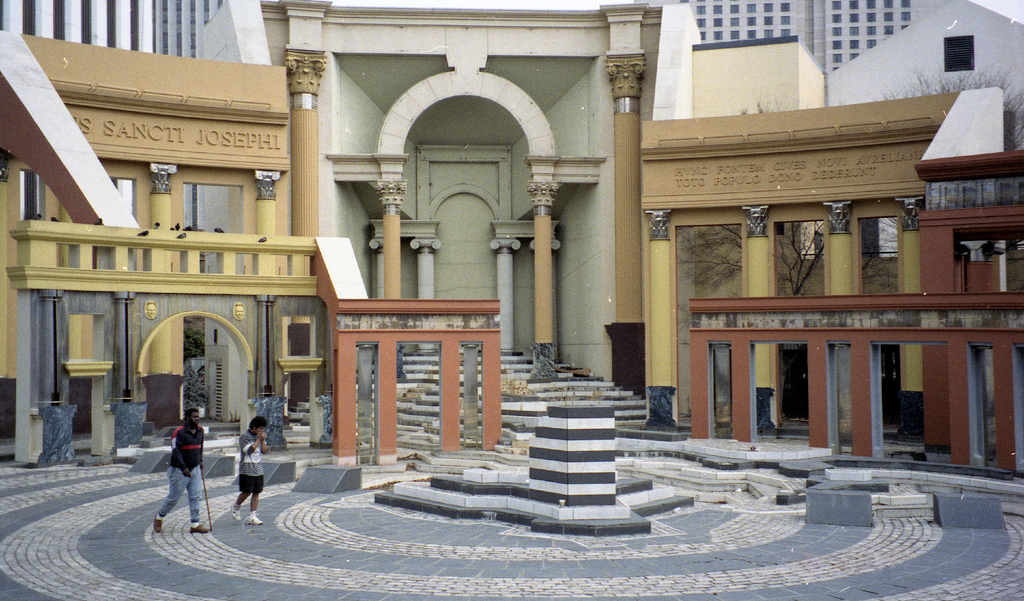Charles Moore's Piazza d'Italia is a renowned postmodern architectural landmark located in New Orleans, Louisiana, USA. Designed as a public space celebrating Italian-American heritage, it exemplifies key tenets of Postmodernism.
Historical Context
Commissioned by local Italian-American organizations, the Piazza was designed by architect Charles Moore (of Moore Ruble Yudell) in collaboration with landscape architect E. Lynn Rogers and others. Construction occurred between 1977 and 1978. Its purpose was to serve as a vibrant, symbolic heart for the Italian-American community within New Orleans' Warehouse District.
Key Design Facts & Significance
- Quintessential Postmodernism: The Piazza is a paradigm of Postmodern architecture, characterized by its rejection of strict Modernist minimalism and its embrace of historical references, symbolism, color, ornament, and wit.
- Collage of Classical Elements: Moore incorporated fragmented and reinterpreted elements drawn from classical Italian architecture – arches, columns (Tuscan, Doric, Ionic), pediments, and loggias – often rendered in exaggerated, distorted, or theatrical ways.
- Staged Urban Theater: The design consciously treats the piazza as a stage set or theater piece. It creates a layered, scenographic environment rather than a conventional plaza, using architecture as a backdrop for civic engagement and spectacle.
- Innovative Materials & Illusion: The Piazza notably juxtaposed traditional materials like stucco and stone with highly modern, even kitschy, elements: stainless steel columns, neon lighting outlining classical forms, coloured lights, water features integrated with architectural elements, and polished terrazzo incorporating the map of Italy.
- Complex Water Features: Water was a fundamental design component, with streams flowing beneath walkways, cascades, and a fountain whose jets outline the map of Sicily, creating an engaging, multi-sensory experience.
- Subversion & Irony: While celebrating heritage, the design also employed irony and subversion. It playfully deconstructed classical forms, mixed them with pop-culture references (like neon), and created an intentionally artificial and referential space, challenging architectural conventions and seriousness.
- Critical Reception & Legacy: Upon completion, it gained international fame as a seminal work of Postmodernism, praised for its boldness, energy, and incorporation of history/humor. However, located somewhat outside the main tourist zones and suffering initial maintenance issues, it fell into disrepair and neglect for decades, ironically becoming a "ruin" itself – a commentary on the impermanence it alluded to. Significant restoration efforts since the early 2000s have revitalized the space.
Concept & Meaning
The Piazza d'Italia was conceived less as a literal replica of an Italian piazza and more as a vibrant, celebratory, and somewhat whimsical "evocation" of Italian cultural identity in the heart of New Orleans. Its fragmented forms reflect the diaspora experience while its theatricality embraces communal gathering and joy. It stands as a powerful manifesto for an architecture rich in symbolism, accessible, and deeply connected to human memory and emotion.








